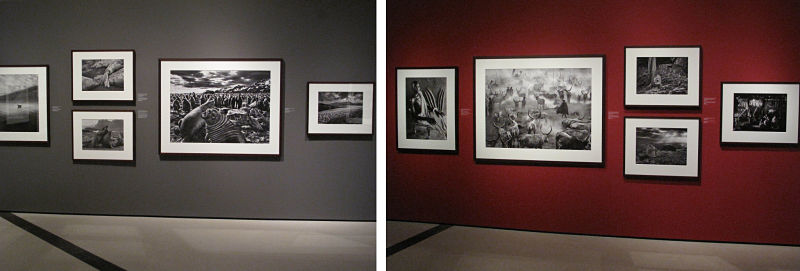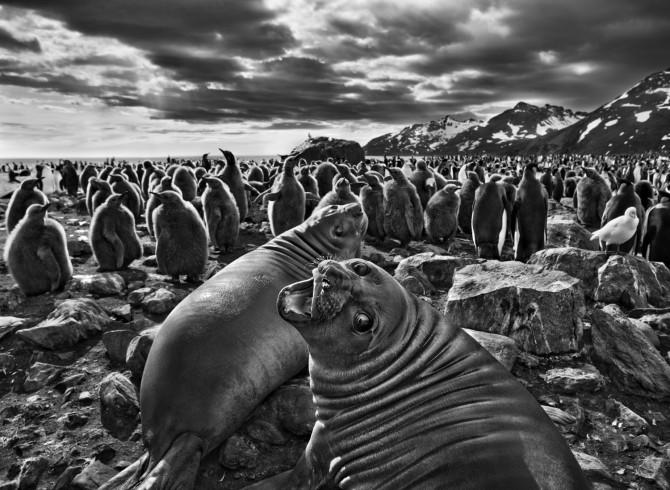Sebastião Salgado’s excellence in photojournalism is displayed in his exhibition entitled Genesis, on at the Royal Ontario Museum until September 2, 2013. Lélia Wanick Salgado, Sebastião’s wife, curated Genesis. The two founded the Instituto Terra, a non-profit organization dedicated to the replanting of the Atlantic Forest in Brazil. The ideas behind Genesis came from this initiative.
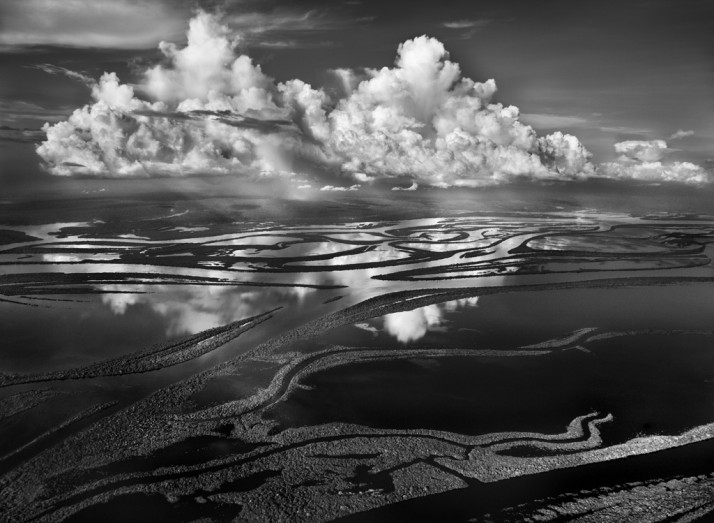 Sebastião Salgado, The Arctic National Wildlife Refuge (ANWR) in northeastern Alaska, 2009, © Sebastião Salgado / Amazonas images
Sebastião Salgado, The Arctic National Wildlife Refuge (ANWR) in northeastern Alaska, 2009, © Sebastião Salgado / Amazonas images
This exhibition, a primary exhibition for the Scotiabank CONTACT Photography Festival, marks Salgado’s first exhibition in Canada. Although some of the photographs in the show were taken in Canada, the opening of the exhibition marked the photographer’s first visit to Toronto. Salgado thinks Canada is a marvelous country; however, what he finds most marvelous about Canada are places that are foreign to most Canadians living in the country’s major cities.
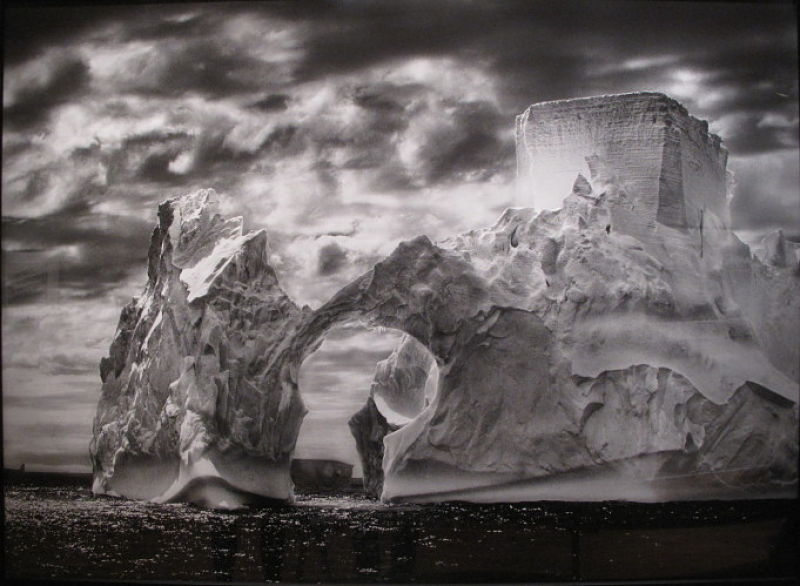 Sebastião Salgado, Iceberg Castle between Paulet Islands and the South Shetland Islands on Weddeil Sea, 2005, © Sebastião Salgado
Sebastião Salgado, Iceberg Castle between Paulet Islands and the South Shetland Islands on Weddeil Sea, 2005, © Sebastião Salgado
The exhibition is divided into two gallery spaces. The first gallery displays the themes of Sanctuaries, Amazonia and Pantanal, and Northern Spaces. The walls are painted green, blue, and grey, calling to mind the earth, water, and ice that these images depict. The second installation contains work from the southern hemisphere, and the other is dedicated to photographs of Africa. The photographs in Planet South are set against slate grey walls like that of the rock of the Patagonian mountains. Africa is emphasized by red, like the harsh sun on the Sahara desert.
Viewers move about this exhibition in the kind of silence one experiences walking through a Gothic Cathedral. The sublime scenes and moments Salgado has captured overwhelm all visitors. All of his photographs are black and white, yet they have the same richness of the most vivid colour photograph. With the absence of colour, the viewer’s eyes are entranced by the rich textures and minute details of the landscapes, people, and animals.
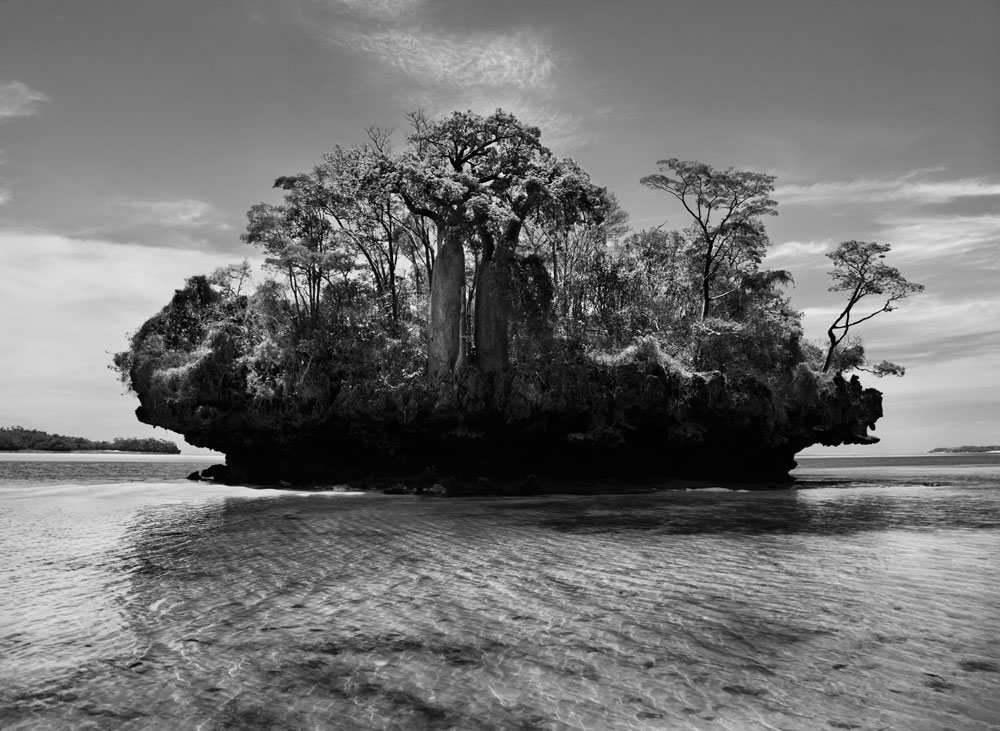 Sebastião Salgado, Bay Madagascar, Baobab Tress. Bay of Moramba, 2010. © Sebastião Salgado
Sebastião Salgado, Bay Madagascar, Baobab Tress. Bay of Moramba, 2010. © Sebastião Salgado
Salgado’s photographs of remote, unspoiled landscapes are far beyond what we think the world looks like. His photographs of landscapes take the viewers across mountains and deserts, through lush rainforests to the artic tundra. Salgado brings together an excellent survey of the beauty of the planet. In many cases these landscapes appear to be alien and surreal places. When looking up close, some photographs appear to be a haze of dust, but when standing back, one sees all the pigments come together to create to the most detailed scenes.
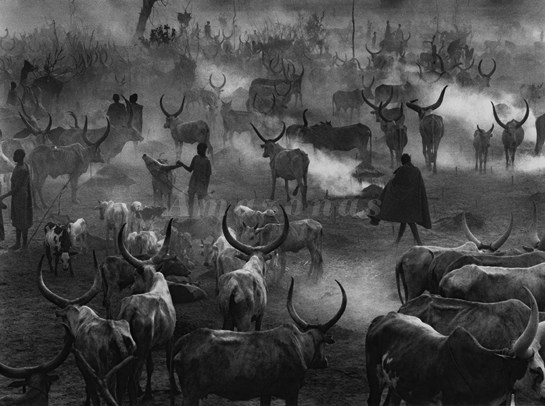 Sebastião Salgado, South Sudan, From Africa, the Dinkas, 2006. © Sebastião Salgado
Sebastião Salgado, South Sudan, From Africa, the Dinkas, 2006. © Sebastião Salgado
Salgado’s landscapes are illuminated with the most incredible light. He uses the natural light to emphasize the beauty of the landscapes. The light is used like a carving tool creating fantastic depth and allowing the viewer’s eye to travel as if for miles through the photographs.
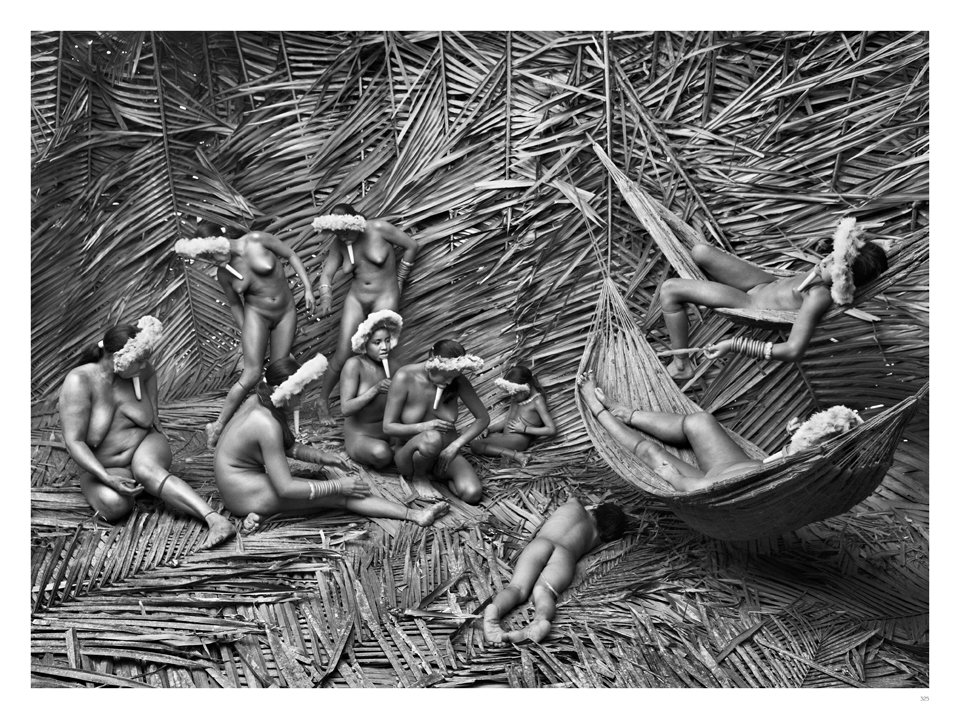 Sebastião Salgado, Yali women at rest, West Papua, Indonesia, 2010, © Sebastião Salgado / Amazonas images
Sebastião Salgado, Yali women at rest, West Papua, Indonesia, 2010, © Sebastião Salgado / Amazonas images
Salgado executed many photographs of people. When searching for people who embodied the ideas behind Genesis, Salgado was looking for people “where they live unhurried lives in communion with nature.” During the eight years creating Genesis, Salgado spent time with and photographed a multitude of communities in remote places and followed their ancestral traditions. These photographs are not representations of “others” or primitive societies, but rather a presentation of an alternative to the western capitalist way of life and thinking. Salgado shot both portraits of individuals and from the daily lives of those people. With his portraits, the detail is so exquisite one feels as if they could stroke the feather headdresses, feel the paint on their faces and bodies, or touch the soft fur.
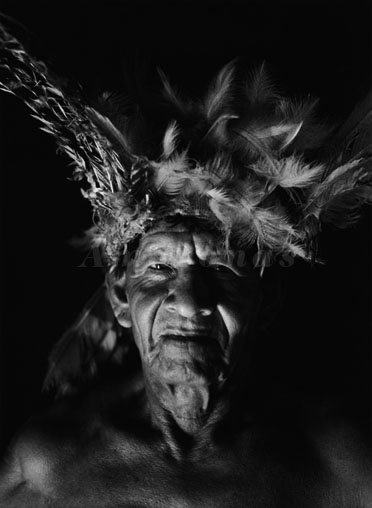 Sebastião Salgado, The Upper Xingu Indians. Brazil, 2005 © Sebastião Salgado
Sebastião Salgado, The Upper Xingu Indians. Brazil, 2005 © Sebastião Salgado
While Salgado has already won a number of awards for his photographs of people, animals are a new subject in Salgado’s work. After so many years of capturing the beauty of people, Salgado has captured animals with an elegance that is equal to that in his photographs of people. In his study of animals from around the world, Salgado captures their sensibility and intelligence.
Working back towards Genesis is the most progressive thing our society can do for the planet, yet the likelihood of this occurring is remote. With modernization, industrialization, and globalization, photo records such as Salgado’s are stark reminders of how much we have to lose if we don’t protect what is truly important.
Alice Tallman
*Note: The show is open till September 2, 2013 at the Royal Ontario Museum, 100 Queen’s Park. Hours: Mon–Sun, 10 – 5:30, Fri, 10 – 8:30 p.m.

